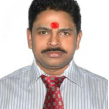
E. Keshava Reddy
Work place: Mathematics Department, JNTUA College of Engineering, India
E-mail: keshava_e@rediffmail.com
Website:
Research Interests:
Biography
Prof .E.Keshava Reddy, obtained his Master’s degree and Ph.D in Mathematics and at present working as an Professor in Department of Mathematics , JNTUA College of Engineering, JNTU University, Anantapur. His areas of interest include Mathematics and Pattern Recognition, Image analysis, Computer networking, data mining, and other latest trends in technology. He has more than 14 years of experience in teaching and research in the area of Mathematics and Computer Science and Engineering. He has attended and conducted many conferences and workshops in different areas and communicated papers to reputed National and International journals. He has served as Controller of Examinations i/c JNTUA Anantapur.
Author Articles
Classifying Similarity and Defect Fabric Textures based on GLCM and Binary Pattern Schemes
By R. Obula Konda Reddy B. Eswara Reddy E. Keshava Reddy
DOI: https://doi.org/10.5815/ijieeb.2013.05.04, Pub. Date: 8 Nov. 2013
Textures are one of the basic features in visual searching,computational vision and also a general property of any surface having ambiguity. This paper presents a texture classification system which has high tolerance against illumination variation. A Gray Level Co-occurrence Matrix (GLCM) and binary pattern based automated similarity identification and defect detection model is presented. Different features are calculated from both GLCM and binary patterns (LBP, LLBP, and SLBP). Then a new rotation-invariant, scale invariant steerable decomposition filter is applied to filter the four orientation sub bands of the image. The experimental results are evaluated and a comparative analysis has been performed for the four different feature types. Finally the texture is classified by different classifiers (PNN, K-NN and SVM) and the classification performance of each classifier is compared. The experimental results have shown that the proposed method produces more accuracy and better classification accuracy over other methods.
[...] Read more.Other Articles
Subscribe to receive issue release notifications and newsletters from MECS Press journals